If you’re new to the world of succulent gardening, you might be feeling a little intimidated by the idea of caring for these delicate plants. After all, they are known for their ability to store water in their leaves, stems, and roots, which means they can be a bit more finicky than your average houseplant.
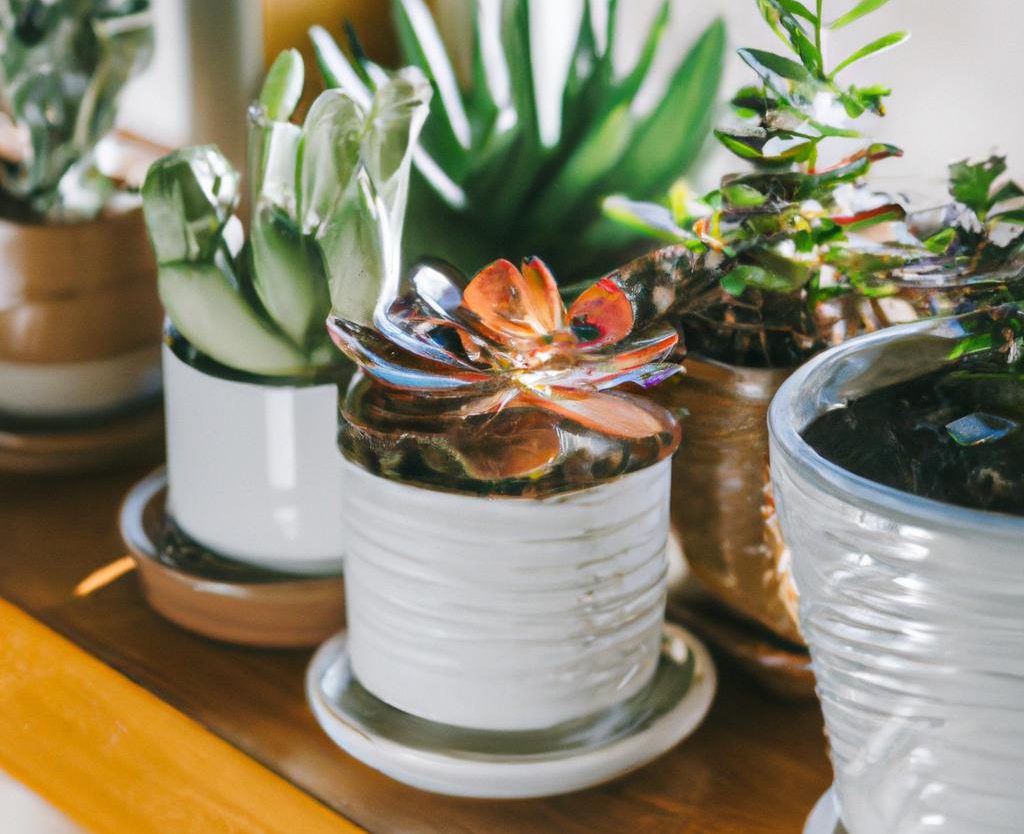
“Succulents are a great option for those who don’t have a lot of time to devote to plant care. Their low-maintenance nature and ability to tolerate a wide range of conditions make them a reliable choice for beginners.” – Succulent Plant Care
However, there are actually a number of succulent varieties that are quite low-maintenance and perfect for beginners. These hardy plants are able to tolerate a wide range of conditions, making them easy to care for even if you’re not a seasoned green thumb.
Here are the top 10 most low-maintenance succulent varieties for beginners:
Top 10 Low-Maintenance Succulent Varieties for Beginners
These low-maintenance succulent plants are easy to care for and can add a touch of greenery and beauty to your home or garden. Give one of these hardy plants a try and see how easy it is to care for your own succulent collection.
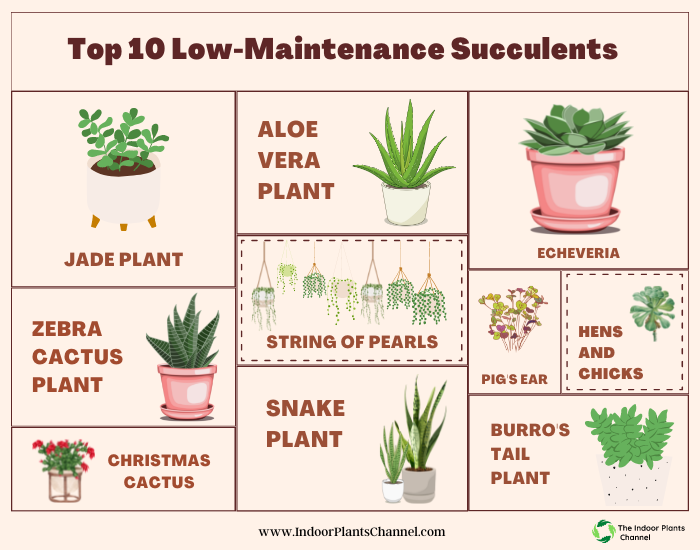
1. Jade Plant (Crassula ovata)
The jade plant is a popular choice for beginners due to its tough and resilient nature. It is able to withstand long periods of drought and can tolerate low light conditions, making it a great option for those who don’t have a lot of time to devote to plant care.
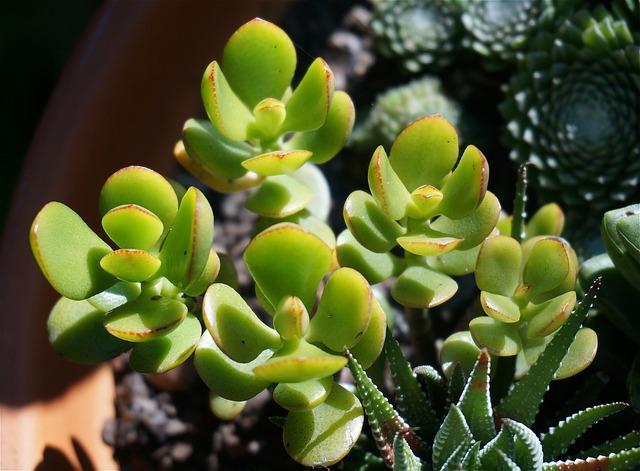
According to Succulent Plant Care, “Jade plants are able to tolerate a wide range of temperatures, making them suitable for both indoor and outdoor cultivation. They are also resistant to pests and diseases, making them a reliable choice for those just starting out with succulents.”
2. Aloe Vera (Aloe barbadensis)
Aloe vera is not only a low-maintenance succulent, but it also has a number of medicinal properties that make it a great addition to any home. Its thick, fleshy leaves are filled with a clear gel that can be used to soothe burns and cuts, as well as moisturize the skin.
“Aloe vera is a hardy plant that is able to tolerate a wide range of growing conditions. It is drought-tolerant and can survive in both low light and full sun,” Succulent Plant Care
3. Pig’s Ear (Cotyledon orbiculata)
Pig’s ear (Cotyledon orbiculata) is a low-maintenance succulent plant that is known for its thick, fleshy leaves that resemble the ear of a pig. It is native to South Africa, where it grows in dry, rocky areas.
The leaves of the pig’s ear plant are typically green in color and are covered in a thick, waxy coating that helps protect the plant from the harsh African sun. It produces small, yellow or orange flowers. It is a slow-growing plant, which means it doesn’t require a lot of maintenance.
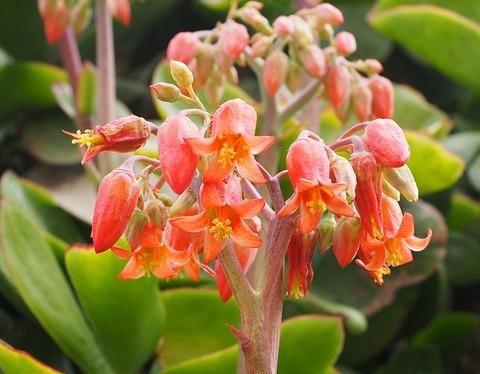
One of the great things about the pig’s ear plant is that it is able to tolerate a wide range of conditions, making it a great option for beginners. It is able to survive in both low light and full sun, and is drought-tolerant, making it a great option for those who don’t have a lot of time to devote to plant care. It is also resistant to pests and diseases, making it a reliable choice for those who are new to succulent gardening.
Most pig’s ear plants prefer bright, indirect light. Avoid placing them in direct sunlight, as this can cause the leaves to become sunburned or fade in color.
4. Zebra Plant (Haworthia fasciata)
The zebra plant is a low-maintenance succulent that is known for its distinctive striped leaves. It is able to tolerate low light conditions and is drought-tolerant, making it a great option for those who don’t have a lot of time to devote to plant care.
“Zebra plants are resistant to pests and diseases, making them a reliable choice for those just starting out with succulents. They are also able to tolerate a wide range of temperatures, making them suitable for both indoor and outdoor cultivation,” Succulent Plant Care
5. String of Pearls (Senecio rowleyanus)
String of Pearls (Senecio rowleyanus) is a trailing succulent plant that is known for its small, round leaves that resemble pearls. It is native to South Africa, where it grows in dry, rocky areas.
The leaves of the string of pearls plant are typically green in color, and the plant produces small, white flowers. It is a low-maintenance plant that is able to tolerate a wide range of conditions, making it a great option for beginners. It is able to tolerate long periods of drought, making it a great option for those who are forgetful about watering their plants. However, it is still important to water your string of pearls plant regularly in order to keep it healthy.
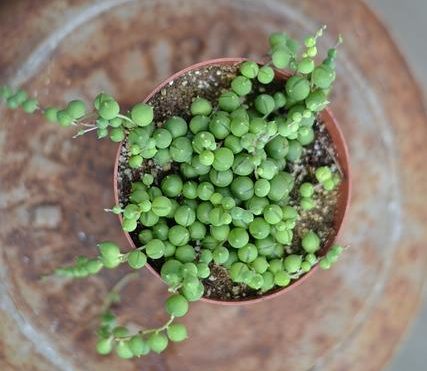
In addition to its low-maintenance nature, the string of pearls plant is also resistant to pests and diseases. This makes it a reliable choice for those who are looking for a plant that is easy to care for and maintain.It is also easy to propagate, which means you can easily create new plants from your existing collection. Simply separate the small offsets or “pearls” from the main plant and plant them in a new pot or soil.
In addition to its beauty, the string of pearls plant is also known for its versatility. It can be grown in a variety of different containers, including hanging baskets, pots, and even wall planters. This makes it a great option for those who are short on space or who want to add a touch of greenery to a small area.
6. Burro’s Tail (Sedum morganianum)
Burro’s tail is a trailing succulent that is known for its long, thin leaves that resemble a tail. It is a low-maintenance plant that is able to tolerate a wide range of conditions, making it a great option for beginners.
7. Christmas Cactus (Schlumbergera spp.)
The Christmas cactus (Schlumbergera spp.) is a popular holiday plant that is known for its bright, colorful flowers. It is native to the rainforests of South America, where it grows as an epiphyte (a plant that grows on another plant) in the crooks of trees and rocks.
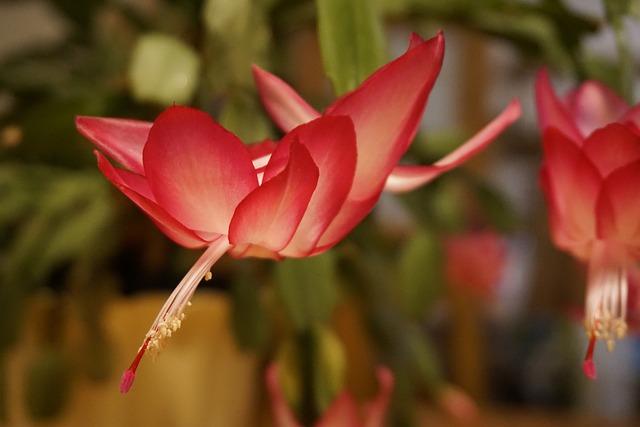
The Christmas cactus has flat, segmented leaves that are typically green in color. It produces beautiful pink, red, or white flowers that bloom in the winter months. These flowers can be quite long-lasting, and the plant is often used as a holiday gift or decorative piece during the winter season.
One of the great things about the Christmas cactus is that it is a low-maintenance plant that is able to tolerate a wide range of conditions. It is able to survive in both low light and full sun and is drought-tolerant, making it a great option for those who don’t have a lot of time to devote to plant care. It is also resistant to pests and diseases, making it a reliable choice for beginners.
8. Echeveria (Echeveria spp.)
Echeveria is a type of succulent that is known for its beautiful rosette-shaped leaves. It is a low-maintenance plant that is able to tolerate a wide range of conditions, making it a great option for beginners.
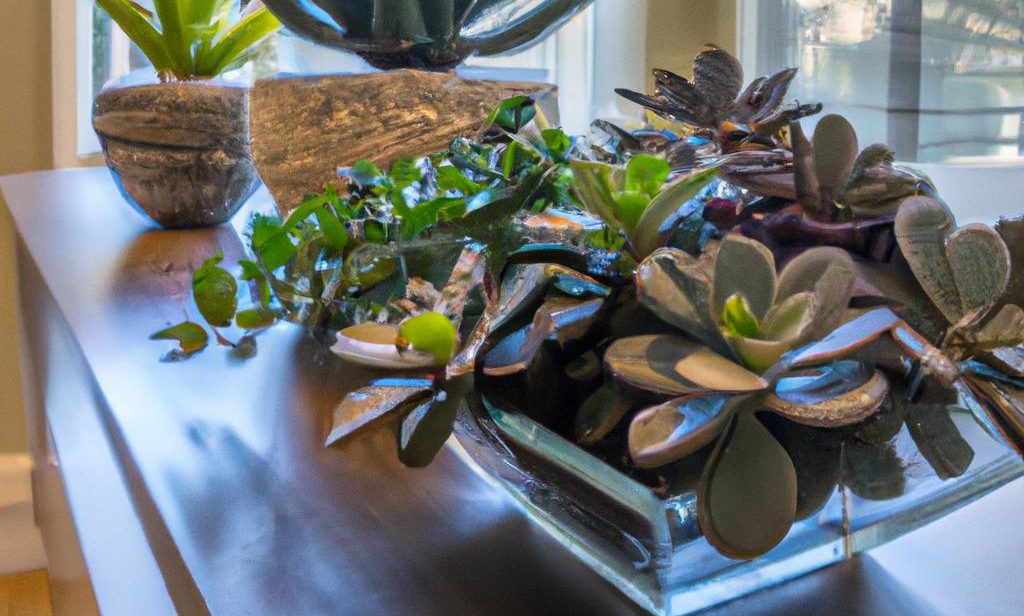
According to Succulent Plant Care, “Echeveria is a drought-tolerant plant that is able to withstand long periods without water. It can survive in both low light and full sun and is resistant to pests and diseases.”
9. Snake Plant (Sansevieria trifasciata)
The snake plant known as the mother-in-law’s tongue, is a tough and resilient succulent that is able to withstand a wide range of conditions. It is able to tolerate low light, making it a great option for those with less than optimal growing conditions.
According to Succulent Plant Care, “Snake plants are able to survive long periods of drought and can tolerate a wide range of temperatures. They are also resistant to pests and diseases, making them a reliable choice for those just starting out with succulents.”
10. Hens and Chicks (Sempervivum spp.)
Hens and chicks (Sempervivum spp.) are a type of low-maintenance succulent plant that is known for its small, rosette-shaped leaves. They are native to Europe and Asia, where they grow in rocky, mountainous areas.
The leaves of the Hens and Chicks plant are typically green in color, although some varieties may have purple or red tones. The plant produces small, pink or purple flowers and is a slow-growing plant, which means it doesn’t require a lot of maintenance.
The Hens and Chicks plant is a beautiful and low-maintenance plant that is sure to add a touch of whimsy to any home. It’s easy to propagate and suitable for growing both indoors and outdoors, making it a versatile plant that can be grown in a variety of different environments.
Hens and Chicks plants are able to tolerate a wide range of temperatures, making them a great option for those who live in areas with extreme temperatures. They are able to survive in temperatures as low as 40°F (4°C) and as high as 95°F (35°C).
8 Tips To Care For Succulent Plants
It’s important to note that while these low-maintenance succulent varieties are easier to care for than some other types of succulents, they still require some basic care in order to thrive.
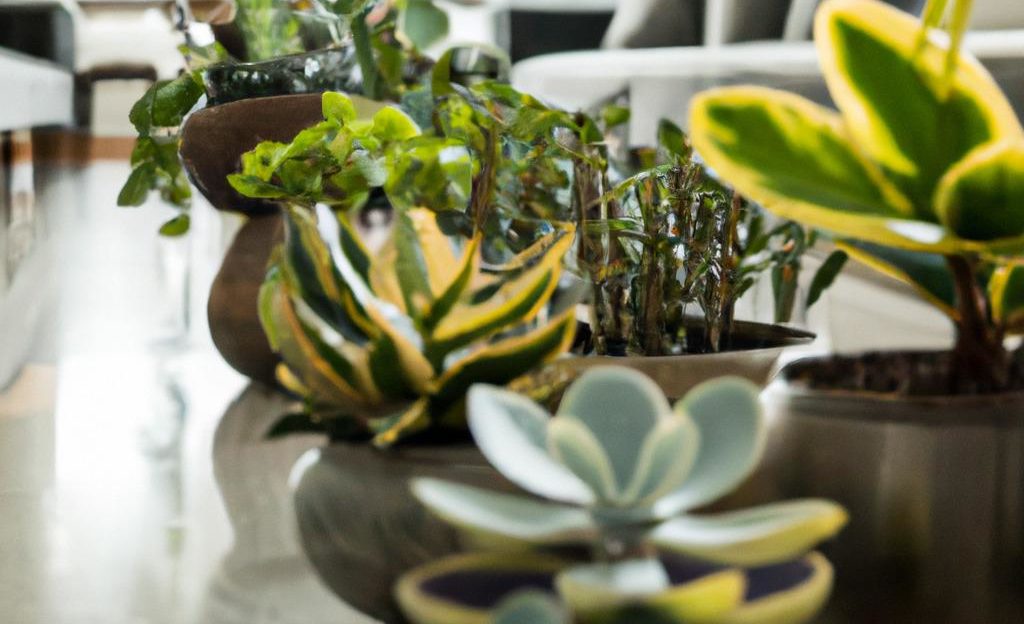
Here are a few tips to help you get started:
1. Provide proper lighting:
Most low-maintenance succulents prefer bright, indirect light. Avoid placing them in direct sunlight, as this can cause the leaves to become sunburned or fade in color. If you’re growing your succulents indoors, be sure to provide them with plenty of bright, indirect light.
2. Water properly:
Succulents are known for their ability to store water in their leaves, stems, and roots, but they still need to be watered regularly. Water your succulents when the soil is dry to the touch, and be sure to use a well-draining soil mix to prevent root rot.
Pay attention to the moisture level of the soil and water your plants when the top inch or so of soil is dry to the touch.
One of the most common mistakes made by beginner succulent gardeners is over-watering their plants. Succulents are sensitive to excess moisture, and too much water can lead to problems such as root rot and other issues. Be sure to use a well-draining soil mix and avoid watering your plants too frequently.
3. Fertilize occasionally:
While low-maintenance succulents don’t require a lot of fertilization, they can benefit from a boost of nutrients every once in a while. Use a water-soluble, balanced fertilizer at half strength every month or so during the growing season.
4. Repot as needed:
As your succulents grow, you may need to repot them into a larger container. Be sure to use a well-draining soil mix and choose a pot that has drainage holes to prevent excess water from accumulating.
It’s important to choose a pot that has drainage holes to allow excess water to drain away. This will help prevent root rot and other problems.
5. Use a good quality soil mix:
Choosing the right soil mix is important for any type of plant, but it’s especially crucial for succulents. They require a well-draining soil mix that will allow excess water to drain away and prevent root rot. A mix of potting soil and perlite or pumice works well for most succulents.
6. Protect your plants from extreme temperatures:
While low-maintenance succulents can tolerate a wide range of temperatures, it’s still important to protect them from extreme heat or cold. Avoid placing them in direct sunlight or in areas that are prone to drafts or sudden temperature changes.
7. Remove damaged or diseased leaves:
It’s normal for succulents to shed their leaves from time to time, but if you notice any that are damaged or diseased, it’s best to remove them. This will help prevent the spread of any problems to the rest of the plant.
8. Use a humidity tray:
If you live in a dry climate or have dry indoor air, your low-maintenance succulents may benefit from a humidity tray. Simply fill a shallow tray with pebbles and water, and place your pots on top of the pebbles. The water will evaporate and create a humid microclimate around your plants.
By following these basic care guidelines, you can help your low-maintenance succulents thrive and enjoy their beauty for years to come.
Frequently Asked Questions
- What low-maintenance succulent varieties are suitable for beginners?
“Some great low-maintenance succulent varieties for beginners include aloe, jade plants, and hens and chicks. These plants are able to tolerate a wide range of conditions and are resistant to pests and diseases, making them easy to care for and maintain.” – Succulent Love
- How often should I water my succulent plants?
“In general, succulent plants should be watered when the soil is dry to the touch. This is typically once a week, but may vary depending on the specific plant and the conditions it is growing in. It is important to avoid overwatering, as this can lead to problems such as root rot.” – The Sill
- Can succulent plants be grown indoors?
“Yes, many succulent plants are well-suited for indoor growing. They are able to tolerate a wide range of lighting conditions and are able to survive in lower light environments. Just be sure to provide them with bright, indirect light and avoid placing them in direct sunlight.” – House Plant Journal
- How do I propagate succulent plants?
“To propagate succulent plants, simply separate the small offsets or “pups” from the main plant and plant them in a new pot or soil. Be sure to use a well-draining soil mix and provide the new plants with bright, indirect light.” – Succulent City
- Do succulent plants need to be fertilized?
“While succulent plants don’t require a lot of fertilization, they can benefit from a boost of nutrients every once in a while. Use a balanced, water-soluble fertilizer at half strength every month or so during the growing season.” – Succulent Guide
Conclusion
These top 10 low-maintenance succulent varieties are perfect for beginners who are looking to get started with succulent gardening. With their tough and resilient nature, they are able to withstand a wide range of conditions, making them easy to care for even if you’re not a seasoned green thumb. So why not give one of these hardy plants a try and see how easy it is to care for your own succulent collection?
Michelle Wilde
Related posts
1 Comment
Leave a Reply Cancel reply
![]()
About Michelle Wilde
Michelle Wilde is a stay-at-home mom and avid plant lover. Armed with a post-graduate degree in Computer Science (no kidding!), she loves researching plants and landscapes. When she is not caring for her 4 kids, she spends time on her passion for plants. She blogs at www.indoorplantschannel.com, the trusted source for indoor plants.
Learn more
Subscribe
* You will receive the latest posts and updates about indoor plants!
Search
Recent Posts
Categories
- Beginner Guides (10)
- FAQ (206)
- General (2)
- How-To Guides (212)
- Indoor Plants (214)
- Pest Management (2)
- Plant Problem Solutions (4)
- Seasonal Growing (2)
- Specialized Environments (2)
- Specific Plant Care (3)
- Technical Growing (2)
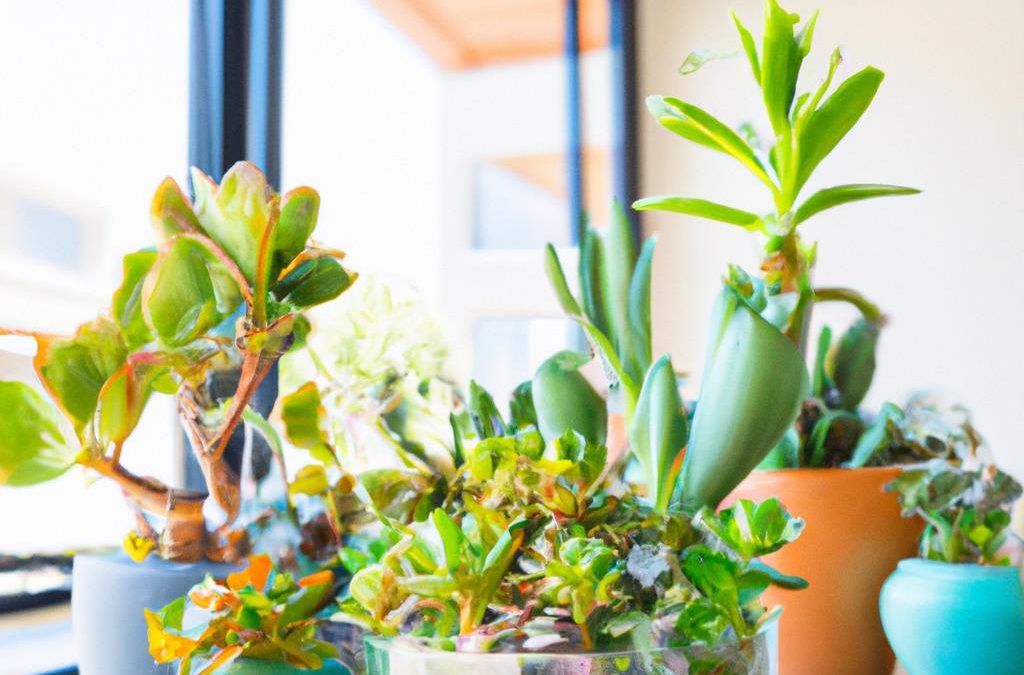
[…] 1 day ago 12 min read […]